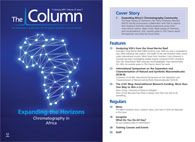AOAC International Award Nominations Open
AOAC International are now accepting nominations for the Harvey W. Wiley and the Fellow of AOAC International awards.
AOAC International are now accepting nominations for the Harvey W. Wiley and the Fellow of AOAC International awards.
The Harvey W. Wiley Award is presented to a scientist (or group of scientists) who has made an outstanding contribution to analytical method development in an area of interest to AOAC International. Nominations for this award must be received no later than 31 January 2017. To obtain a Harvey W. Wiley nomination form click here>>
The Fellow of AOAC International Award recognizes meritorious voluntary services to the Association, increasing the success and prestige of the AOAC. Nominations for this award must be received no later than 15 February 2017. To obtain a Fellow of AOAC nomination form click here>>
For more information about these awards and about AOAC International please click here>>

University of Rouen-Normandy Scientists Explore Eco-Friendly Sampling Approach for GC-HRMS
April 17th 2025Root exudates—substances secreted by living plant roots—are challenging to sample, as they are typically extracted using artificial devices and can vary widely in both quantity and composition across plant species.
Thermodynamic Insights into Organic Solvent Extraction for Chemical Analysis of Medical Devices
April 16th 2025A new study, published by a researcher from Chemical Characterization Solutions in Minnesota, explored a new approach for sample preparation for the chemical characterization of medical devices.










